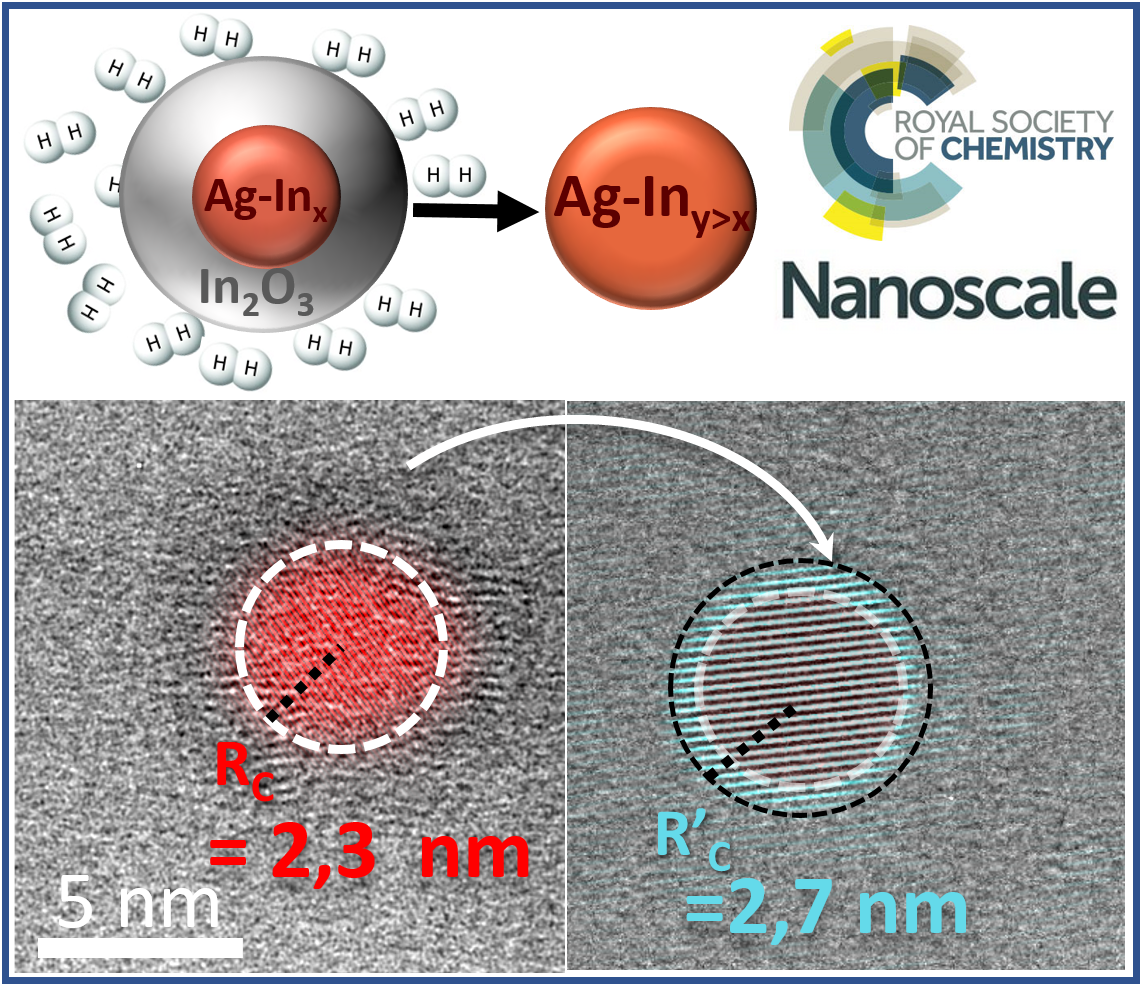
Métamorphose au cœur des nanoparticules bimétalliques
Julien Ramade, Michel Pellarin, Marie-Ange Lebeault et Emmanuel Cottancin (equipe équipe Agrégats et Nanostructures ), ont publié un article intitulé "Tracking the restructuring of oxidized silver-indium nanoparticles under a reducing atmosphere by environmental HRTEM" dans la revue Nanoscale.

Metamorphosis in the heart of bimetallic nanoparticles
Julien Ramade, Michel Pellarin, Marie-Ange Lebeault and Emmanuel Cottancin (team NanoMaterials for Energy), have published an article entitled"Tracking the restructuring of oxidized silver-indium nanoparticles under a reducing atmosphere by environmental HRTEM" in the journal Nanoscale.
Les nano-alliages à base de métaux présentent une grande richesse au niveau de leur structure interne (cœur-coquille, « Janus », alliage à l’échelle atomique, …) et de leurs propriétés physico-chimiques ; selon la nature des constituants, ces nanoparticules sont aussi très sensibles à leur environnement, et suivre leur évolution structurale en phase gazeuse contrôlée est un enjeu majeur pour des applications en catalyse ou détection d’espèces moléculaires adsorbées. Dans ce cadre, les auteurs ont étudié par microscopie électronique environnementale à haute résolution des nanoparticules d’indium-argent (In75Ag25) produites au PLYRA par la technique de vaporisation laser. L’indium étant très sensible à l’oxydation, ces nanoparticules une fois remises à l’air adoptent une structure chimique remarquable consistant en un cœur d’alliage In-Ag (très riche en argent) entouré d’une coquille sphérique d’indium oxydé (In2O3). Pour des températures et des pressions d’hydrogène suffisamment importantes, les auteurs ont observé in operando la réduction de la coque d’oxyde accompagnée d’un grossissement du cœur d’alliage qui se transforme en s’enrichissant progressivement en indium pour former un nouvel alliage In-Ag très stable vis-à-vis de l’oxydation. Ce travail a prouvé le potentiel de la microscopie électronique environnementale pour comprendre les mécanismes de restructuration sous environnement chimique réactif.
Multimetallic nano-alloys may adopt various structures (alloys, Janus, core-shell…) and display various physicochemical properties evolving under reactive environment. Following and understanding this evolution is therefore crucial for future applications in gas sensing and heterogeneous catalysis. The authors studied the structural evolution of Ag25In75 bimetallic nanoparticles (produced by laser vaporization at the PLYRA facility) through environmental transmission microscopy (E-TEM) while maintaining atomic resolution. Indium being strongly sensitive to oxygen, the bimetallic nanoparticles after air transfer adopt a remarkable structure consisting of an indium-oxide shell surrounding a silver-rich alloyed phase. For large enough hydrogen pressure and temperature, the authors observed in operando the direct reduction of the indium oxide shell along with the growth of the core which gets enriched in indium to form a new alloy very stable and extraordinary resistant against oxidation.
03/10/2017


















